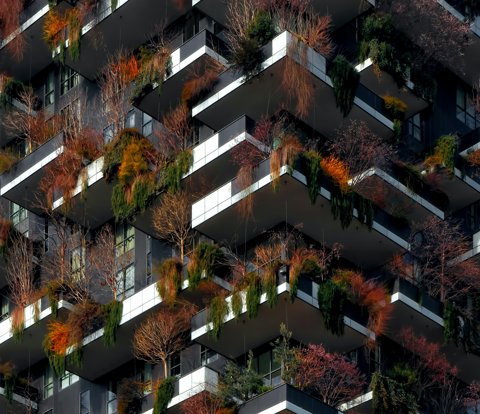Source: Citi Research, finsight.com
Benefits for the investor; benefits for the market
So, how does it work? Lee: “The basic idea of the asset-backed security structure is that the companies (originators) that make the loans to individual customers bundle these together in one securitized product and sell them on to institutional investors. The capital that the originators receive can then be used to finance more solar projects. Furthermore, as the market for solar ABS grows and strengthens, originators can expect to consistently securitize their investment, increasing liquidity for the market, and ultimately reducing the cost of capital for customers.” This stimulates further growth of the residential solar market, scaling up renewable energy on a local level.
According to Lee, this investment offers APG a unique way to make impact by directly supporting the residential solar energy market. “It also offers diversification benefits and attractive financial and risk parameters. Solar ABS offers competitive spreads compared to other types of ABS (auto, for example) and performance has been relatively stable with early delinquency rates currently around 1 percent as the underlying borrowers are incentivized to keep their solar systems running to reduce their utility bills. ABS also has a low correlation with traditional asset classes.”
Strong relationship with well-established loan originator
This ABS was issued by finance technology company GoodLeap, an originator that has been running a solar loan generation platform since 2017 and one of the three largest solar ABS issuers in 2022. “We proactively reached out to GoodLeap to discuss both public and private opportunities and to share our pension fund clients’ sustainable investment objectives,” explains Lee. “The engagement enabled us to pre-discuss terms for their upcoming ABS issue as well as establishing a relationship for potential future transactions.”
This ensured that the deal was pre-marketed to APG along with only two other institutional investors, ahead of its formal announcement; a key factor in determining the allocation, according to Lee. “If APG had not engaged with GoodLeap in this way, we would have ended up with far less than the 25 million dollar investment we ultimately received for our clients. Our intensive dialogue gave us the opportunity to give our input on deal terms to ensure the structure of the transaction fulfilled the more stringent EU requirements for this type of instrument in terms of risk management and transparency, for example.”
Green label
Solar ABS can be eligible for green certification as the underlying assets contribute to climate change mitigation. This makes the structure attractive for investors with sustainable investing mandates. “In the case of this issue, Sustainalytics provided a second-party opinion on GoodLeap’s green bond framework in 2022 and reviewed the details of this specific ABS. This includes assessing whether the proceeds will be dedicated to financing renewable projects and means reporting on impact metrics relating to the ESG performance of the assets, such as CO2 emissions avoided,” explains Lee.
Details of the investment
The total value of the invested Solar ABS deal is $471 million and the pool of loans consists of 9,015 residential solar and 3,330 home efficiency loans, in total 12,345 loans. Lee: “The home efficiency loans cover improvements such as heating and air conditioning systems, water pumps, insulation and EV charging equipment. In the case of this specific issue, in value terms, more than 90 percent of the loans were earmarked for solar power.”
The Morningstar/Sustainalytics report shows estimated metrics for the quantitative environmental impacts of the projects financed by this GoodLeap ABS. “We are working on developing a real world outcome reporting methodology that will enable us to also determine the specific contribution made by our clients’ individual investments,” continues Lee.
|
Indicator
|
Outcome (approximate)
|
|
Total capacity installed
|
80.84 MW (DC)
|
|
Total assumed renewable energy produced
|
3,611,437.62 MWh
|
|
Total estimated energy saved by home efficiency improvements (during assumed life)
|
10,913.11 MWh
|
Source: Morningstar/Sustainalytics Green Bond Pre-issuance Review (“GoodLeap Sustainable Home Solutions Trust 2023-3”), July 18, 2023 (MW = megawatt/DC = direct current/MWh = megawatt hour)
Looking ahead
The level of knowledge among US consumers when it comes to clean energy products such as residential solar is generally still lagging compared to Europe, acknowledges Lee. “But increased outages due to obsolete power grids and heightened awareness of climate risk combined with supportive policies and solar tax credits are motivating more homeowners to install solar panels. These factors are likely to underpin the market’s further growth.”
Lee: “Solar ABS represents a unique way fixed income can support our clients’ responsible investing goals while delivering an attractive risk-return profile. We see opportunities to further increase the use of these types of investment structures in our clients’ portfolio and are actively exploring investments in other areas that have the potential to create real world impact, for example, in sustainable agriculture and social housing.”




